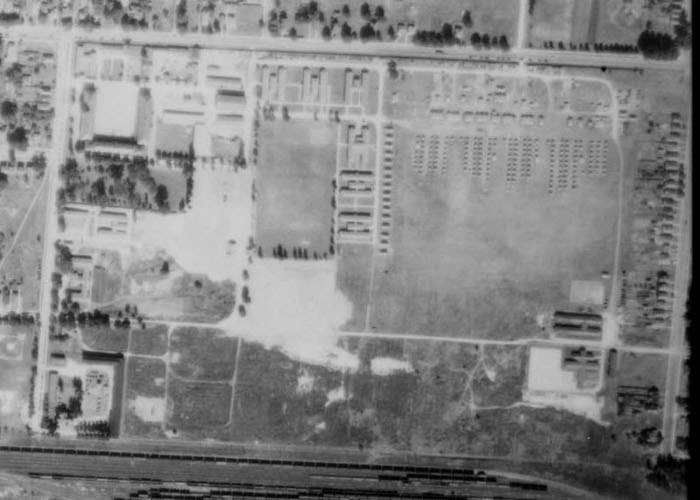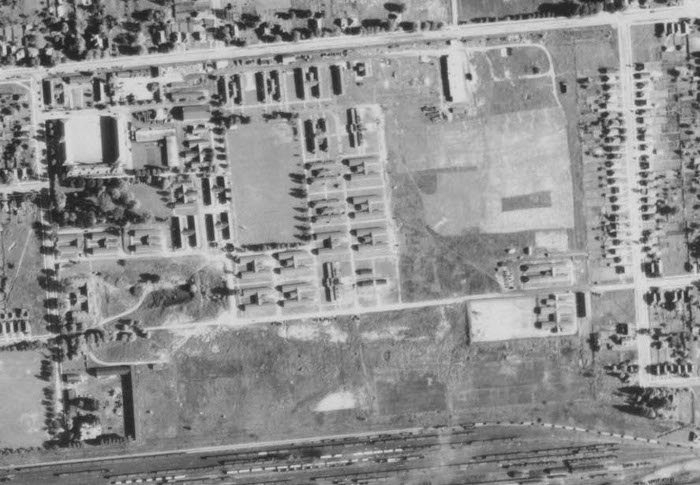Topic: Wolseley Barracks
Thanks to the University of Western Ontario, we can explore the development of London through their online publication of local aerial photos. Among their resources can be found a series of images taken of London's urban area in the 1940s, including the neighbourhoods covering and surrounding Wolseley Barracks.
Wolseley Barracks, created in 1886 on property formerly owned by the Carling family, saw the construction of Wolseley Hall between 1886 and 1888 and the occupation of the barracks by "D" Company of the Canadian Infantry School Corps in 1888. The Infantry School Corps has become The Royal Canadian Regiment, which has had a continuous presence in London since the 1880s and still recognizes Wolseley Barracks as its Home Station today. Today the 4th Battalion of the Regiment and The RCR Museum remain quartered in Wolseley Hall.
In these aerial photos taken during and just after the Second World War, we can see the development and growth of the buildings at Wolseley Barracks during this very busy period for the base. During the War, Wolseley Barracks was the home of No. 1 District Depot which saw Canadian servicemen at the start and the end of their service, passing through Wolseley Barracks for some of their training and then again for discharge.
1942

Most of the First World War generation of buildings are gone in this image, starting to be replaced by the ubiquitous Second World War "H Huts," construction of which started in 1941. These buildings, named for their distictive shape were, in their simplest use, two long open barracks joined in the centre by washrooms and utility areas. These will be familiar to anyone who has served on almoat any Canadian Army base from that era to the 1990s, and some are probably still standing around the country. In the upper right of the base area, tent lines can be seen as the need for housing easily outstripped available barracks space.
1945

The aerial photos at Western Libraries Map and Data Centre are provided with the following source data:
- City of London Aerial Photographs – 1942
- Photography scale: 1:12,000
- Capture Date: Summer, 1942
- Type: Black and White
- Size: 20 x 25 cm
- Source: [Dept. of Lands & Forests]
- City of London Aerial Photographs – 1945
- Photography scale: 1:20,000 (blue)
- Capture Date: September 4, 1945
- Source: National Air Photo Library
